Public Transit
In the Bay Area, MUNI (CCSF), AC Transit (Alameda County), Golden Gate Transit (Marin County) and SamTrans (San Mateo County) are the largest public bus service providers. Also providing public transit in the Bay Area are trains and rail service (BART, Caltrain and the new Sonoma-Marin Area Rail Transit (SMART).
Special laws apply to these public transportation providers and all public entities in California. Particularly important, the statute of limitations is shorter than in most injury claims. If you sustained an injury or lost a loved one due to the fault of a public entity or its employees, a claim must be asserted a public entity within six months of the injury, or you lose your right to recovery.
While buses provide transportation for a significant number of people, they are regularly involved in collisions with pedestrians, other vehicles, or non-moving objects. Contributing factors in accidents involving buses may include:
- A bus or train driver error– This may include the same errors drivers of motor vehicles make, such as being inexperienced, being distracted by a cell phone or passenger, driving too fast, looking away from the road for a minute, or driving while fatigued or under the influence of substances.
- An accident caused by a motor vehicle driver– When a motor vehicle driver makes an unexpected move such as swerving into the wrong lane, it can cause a bus driver to lose control of the bus.
- A defective vehicle part– If a bus or train part malfunctions, it can lead to accidents.
MUNI – SF’s Public Transit
In the Bay Area, the largest transit provider is the Municipal Railway, known as MUNI, is the public transit system for the City and County of San Francisco. MUNI is the seventh largest transit system in the nation, with nearly 90,000,000 rides in 2021, or about 250,000 per day. MUNI employs approximately 2,500 operators and 1,200 different vehicles, including diesel-electric hybrid buses, electric trolleybuses, light rail vehicles (LRV), historic streetcars, and a fleet of 40 cable cars operating on three cable car lines. MUNI offers connections to BART, Caltrain, AC Transit, Golden Gate Transit and SamTrans. MUNI has an operating budget of approximately $1.2 billion per year.
MUNI crashes nearly every third day on average on Mission Street in SF
Mission Street, more than seven miles long, is the most dangerous street in San Francisco for MUNI accidents. Mission Street had 293 collisions between 2019 and June 30, 2022, according to the SF Standard. It also found that MUNI had 194 crashes on Third Street and 163 on Market Street during that time period.
Stay away from MUNI on Mission & 16th Streets
MUNI crashed most frequently at Mission and 16th Street, where it had 36 accidents between 2109 and mid-2022. La Playa and Judah (27) and Third Street and 20th Street (25) followed as the second and third intersections in San Francisco where MUNI most frequently crashed. Yes, Third was third.
MUNI is a “common carrier” and must use the highest degree of care and vigilance to ensure the safety of its passengers under the law. MUNI must maintain its vehicles to be safe and fit to transport passengers. MUNI must properly train its operators the vehicles safely. And, MUNI must establish safety procedures to prevent accidents.
AC Transit Accident Attorneys
The AC Transit system serves more than 62 million riders annually in Alameda County, Contra Costa County, downtown San Francisco, and the surrounding Bay Area. Almost 14 million riders rely on SamTrans bus service each year. SamTrans also operates the Redi-Wheels and RediCoast programs (specially equipped buses and vans to serve those with mobility equipment). SamTrans connects with the Caltrain rail service, the Santa Clara Valley Transportation Authority (VTA), and BART.
At times, MUNI and AC Transit are negligent
Occasionally, MUNI, AC Transit and other public transits do not meet their duty of care. The operators of the services commit errors and safety violations. Their employees fail to always properly train drivers and fail to adequately maintain some its vehicles. As a result, accidents continue to occur.
Special laws apply to MUNI, AC Transit and all public entities in California. Particularly important, the statute of limitations is shorter than in most injury claims. If you sustained an injury or lost a loved one due to the fault of a public entity or its employees, a claim must be asserted a public entity within six months of the injury or you lose your right to recovery.
Our firm has recovered millions of dollars in verdicts and settlements for victims of injuries or families that lost a loved one.
We handle all our cases, including those against MUNI and AC Transit, on a contingent fee basis. So, you pay no attorney’s fees unless we are successful in achieving a financial recovery in your case.
